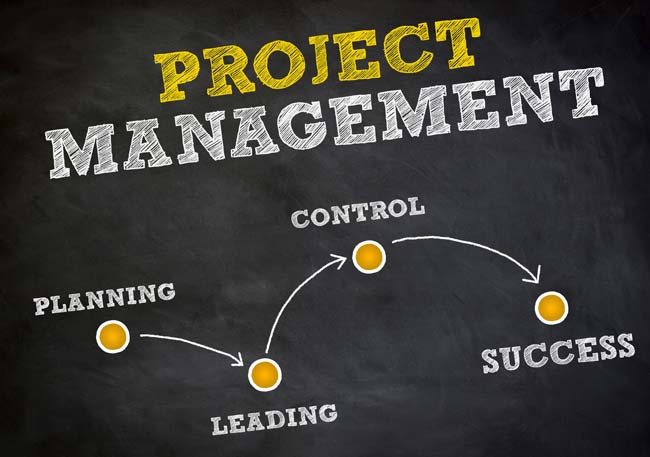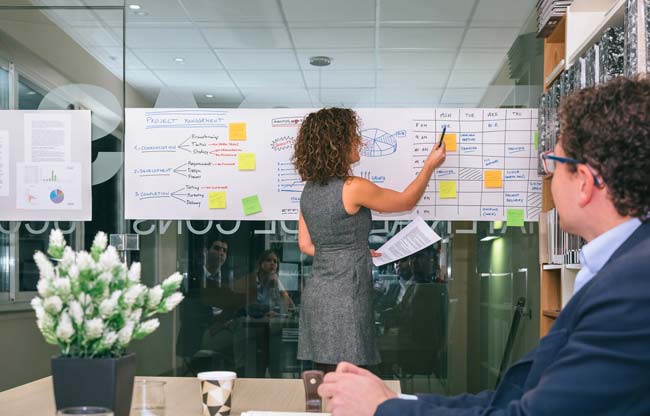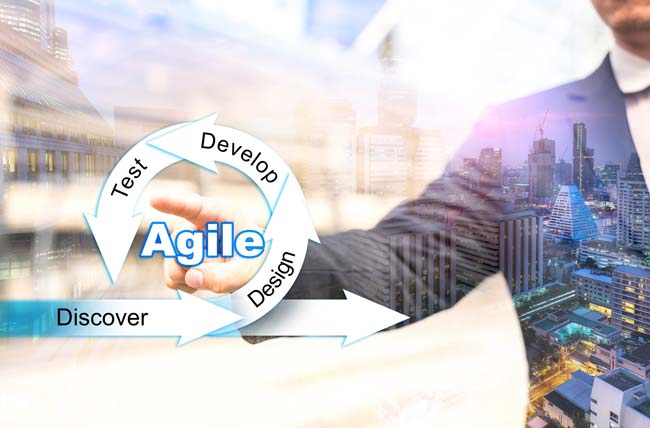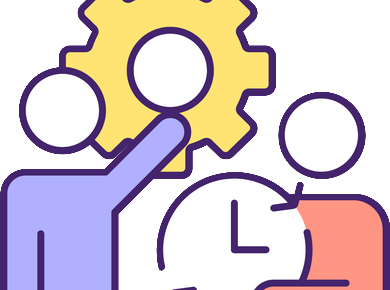Project Management is a concept that is constantly evolving and updating. Generally is defined as a group of interrelated activities, grouped in a logical sequence, carried out within a defined time frame, and using limited resources to achieve results clearly defined, to achieve clear objectives.
Project Management may be applied to any type of project, regardless of its size, nature, and industry. Of course, there are differences depending on the specifics of each project, but there have been developed models that can be applied to a specific type of project through templates that are specific to a certain industry.
For example, in the construction industry has developed the Construction project management, and for the information technology industry there is IT project management.
The many variables that must be taken into account led to the emergence of several different techniques of Project Management.
Criteria for choosing the right technique of Project Management

The type of Project Management approach must be determined according to the nature and characteristics of the project. After establishing the main goal and the objectives of the project, several characteristics must be taken into account to select the right technique of Project Management:
- Applicable field – because some methods are more suitable for software development, while others are compatible with large, sequential projects, such as constructions
- Calendar flexibility – If the time-frame is rigid then linear methods such as those with Critical path or Waterfall are better suited, while for a flexible time-frame the Agile approach may be more appropriate
- Budget – Waterfall and PERT work better for larger teams. If the budget is rigid this usually implies also a rigid time frame and then a more suitable the methods with Critical path or Waterfall
- Team – For more small, autonomous teams that communicate well with each other, Scrum and other forms of Agile are better suited
- Parties involvement – If frequent interventions are needed for feedback, the Agile model is suitable for Project Management
- Project complexity – A large, complicated project can benefit from a well-planned and constantly documented method such as the critical or Waterfall method.
Project Management Methods

PRINCE2
Projects IN Controlled Environments for architecture, construction, and marketing
A structured process-based Project Management approach. It divides projects into manageable and controllable stages. Based on seven principles, themes, and processes that will successfully take a project to completion.
CCPM
Critical Chain Project Managementfor manufacturing and construction
A Project Management method that requires resources to be flexible from the beginning and keep them up to date. Project buffers between critical tasks are added to the initial project schedule and thus ensure the timely completion of the project.
CPM
Critical Path Methodfor manufacturing, science, construction and architecture, and engineering
A Project Management method that involves building a project structure based on the elements: List of tasks, Duration of each task, Relationship between tasks and milestones, and Deliverable items. Based on this structure, it is calculated which activities can be postponed without having an effect on the duration of the project and which are the “critical” activities.
Project Management Methodologies

PRiSM
Projects integrating Sustainable Methods for construction, architecture, or landscape
It is a principles-based sustainable Project Management methodology that extends beyond the typical project lifecycle.
Crystal
For software development
Developed by Alistair Cockburn, this Project Management methodology takes into account the fact that people’s communication, talents and skills have the greatest impact on a project. Therefore, to the detriment of processes and tools, the emphasis is on human interaction.
Project Management Frameworks

APF
Adaptive Project Framework for information technology, environmental protection
An adaptive Project Management framework in which, in order to give maximum value to the business, the course of the project is constantly corrected.
XPM
Extreme Project Management for software development
An adequate Project Management framework for carrying out complex projects. It is suitable in situations where the end point is not easy to understand, but at the same time failure is not an option. It also focuses on quality of life, speed, innovation, and profitability.
BRM
Benefits Realization Management for information technology
The purpose of this Project Management framework is to ensure alignment between project results and business strategies. It includes clear roles and responsibilities, processes, principles and results.
Project Management Techniques

Agile
For software development.
A flexible approach to project management. To make it easier to accomplish, large projects are broken down into tasks. Subsequently the approach of those is done in iterations or short sprints. Nearshore software development companies can use this approach to stay agile and work closely with clients, even when they’re in different locations.
Scrum framework
For software development
A highly effective Project Management framework. While working on a problem, teams are encouraged to organize and learn from experiences. they need to be continuously improved by reflecting on previous gains and losses.
Kanban method
For digital marketing, software development, construction, architecture, design, law, education
A visual Project Management tool, simple and flexible that allows organizing and managing the processes on a board called “Kanban board”.
Note that Scrumban is also used for Project Management. It is a combination of the two previous methods, namely Scrum and Kanban. This is a visual alternative for projects that are often interrupted or face regular changes or updates when it comes to activities and their priority
XP
Extreme Programming for software development
An Agile framework for Project Management used to improve software quality and responsiveness to changing customer requirements.
PMBOK®
For architecture, construction, quality assurance, consulting, finance, governance
A body of knowledge for Project Management that contains structured information on managing projects. It divides the project work into five process groups: Initiation, Planning, Execution, Monitoring, and Closure.
Lean
For manufacturing, construction
For projects where the focal point is eliminating waste. It lowers the project’s waste rates and eventually eliminates them completely. The main focus is to deliver valuable products and increase the organization’s profits with fewer resources
Six Sigma
For healthcare, engineering, market research, manufacturing
Six Sigma is an approach and methodology for Project Management where the main goal is delivering a high-quality product. It delivers efficient, uniform, and defect-free final products in 6 steps: Define, Measure, Analyze, Improve, Control, and Synergize.
It is worth mentioning that Lean Six Sigma, a combination of Lean and Six Sigma, can be applied for Project Management where the target is eliminating waste while creating more value. It works well for manufacturing, transportation, and logistics, service and it creates more efficient projects that meet client requirements with fewer resources and on a lower budget.
Waterfall
For media production, manufacturing, construction
The product development process is divided into groups of related tasks that must be completed before moving on to the next group or phase. It includes 5 core phases: Requirements, Design, Implementation, Verification (testing), Maintenance.
RAD
Rapid Applications Development for software development
A Project Management that it focuses on minimizing the planning stage and maximizing prototype development while ensuring that all essential features work properly. Has four main phases: requirements planning, User design, Rapid construction, and Cutover
DSDM
Dynamic Systems Development Method for software development
It prioritizes schedule and quality over functionality and is developed on 8 principles that direct to achieving the project goals: Focus on the business need, Deliver on time, Collaborate, Never compromise quality, Build incrementally from firm foundations, Develop iteratively, Communicate continuously and clearly, Demonstrate control.
RUP
Rational Unified Process for software development
It is a process framework for Project Management that has four stages: Initiation, Development, Construction, Transition. For each of these stages there is a specific plan. This framework reduces unexpected development costs and prevents loss of resources.
FDD
Feature Driven Development for software development
It is used for Project Management in long-term product development that faces regular and repeated changes. It is based on five processes: Develop overall model, Build feature list, Plan by Feature, Design by Feature, Build by feature.
PERT
Program Evaluation and Review Technique
A project management control tool that presents the events and landmarks within the project in a visual manner, a graph. In PERT, three different time estimates are used: the shortest possible time for each task, the most likely time, and the longest period of tasks could last if things do not go as planned.
Using the right link-building tools is essential for enhancing your website’s authority and improving its search engine rankings. Effective link-building not only increases the quantity of backlinks but also focuses on their quality, ensuring that your site is connected to reputable sources. Tools such as link building software by Linkee can streamline this process, automating outreach and tracking your progress. By leveraging these tools, you can efficiently build a diverse backlink profile that drives organic traffic and strengthens your overall SEO strategy. Investing in the right resources allows you to concentrate on creating high-quality content while effectively managing your link-building efforts.





